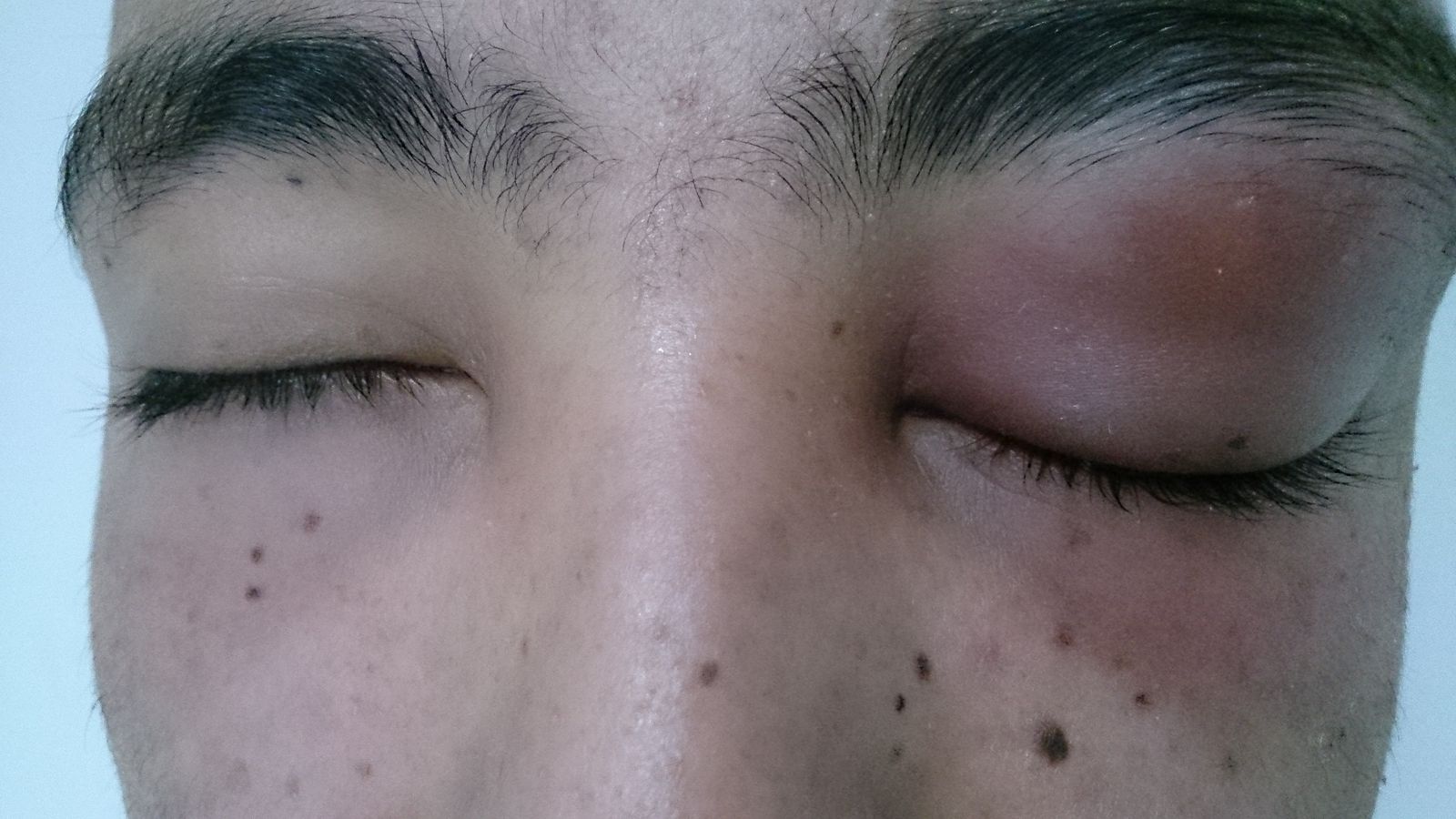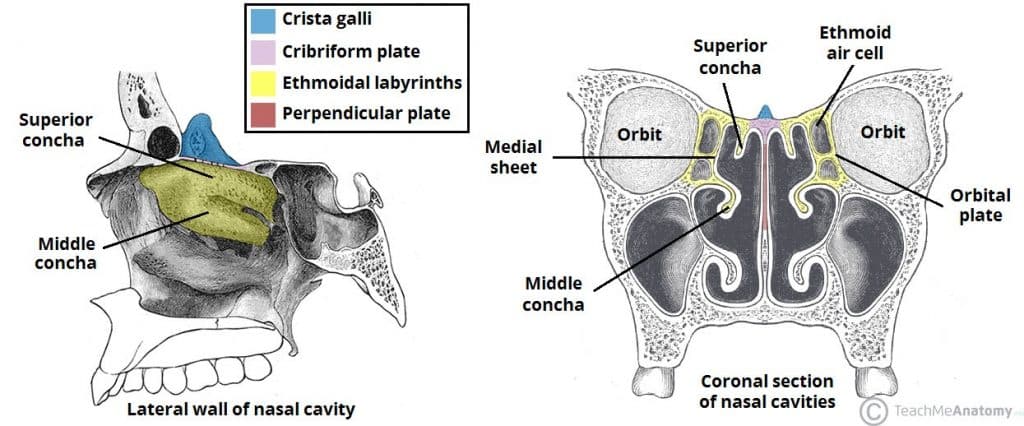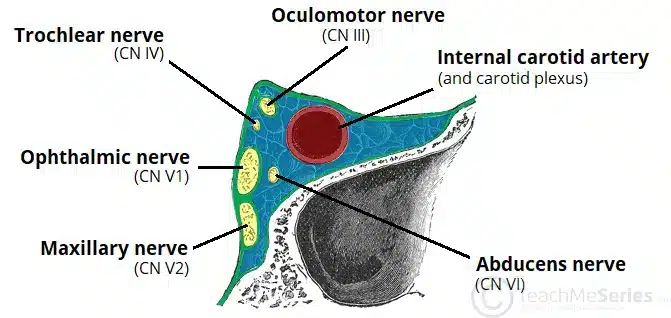Introduction
Periorbital cellulitis is defined as any infection of the eyelid and surrounding skin and subcutaneous tissue of the orbit.
Whilst the majority of cases can be treated with intravenous antibiotics, left untreated, periorbital cellulitis can lead to vision loss, intracranial infection, and overwhelming sepsis.
The condition predominantly occurs in children, however can affect any age group. Prompt diagnosis and treatment are essential.
In this article, we shall look at the assessment, diagnosis, and management of periorbital cellulitis.
Pathophysiology
Periorbital cellulitis can be classified as either pre-septal or post-septal (or orbital cellulitis), relative to the orbital septum. The orbital septum is the fibrous layer that forms an anterior boundary of the orbit, which acts to reduce the spread of infection between the pre-septal space to post-septal space.
- Pre-septal infections primarily involved skin/soft tissue and are usually be precipitated by a primary skin infection (e.g. from a small cut or bite)
- Post-septal infections (commonly known as orbital cellulitis) are often caused by spread of infection from the paranasal sinuses (e.g. acute rhinosinusitis) or teeth (Fig. 1)
Orbital cellulitis is of greater concern, as can lead to abscess formation and threaten the functioning of the eye,.
Common causative organisms of periorbital cellulitis are Haemophilia influenza, Streptococcus pneumonia, and Staphylococci.
Risk Factors
Risk factors for developing periorbital cellulitis include recent trauma to the periorbital region, recent ophthalmic or ENT procedure, recurrent upper respiratory tract infections, and those with diabetes mellitus or any immunocompromise.
Clinical Features
Patients will present with acute onset pain and swelling in the periorbital region. There may be a pre-existing of rhinosinusitis or recent trauma / insect bite to the region
In serious cases, visual changes and clinical features of sepsis can develop. Any bilateral symptoms are worrying and should prompt investigation for cavernous sinus thrombosis (see below)
On examination, there will be tenderness, swelling, and erythema in the periorbital region (Fig, 2). Ensure to examine the cranial nerves and assess for signs of meningism (suggestive of a spread intracranial infection)
Ensure to perform a nasal examination; a flexible nasal endoscopy can be performed if required to assess for features of rhinosinusitis. All cases, especially when severe, should have a full assessment by an ophthalmologist.

Figure 2 – A patient with left sided periorbital cellulitis
Chandlers’ Classification
Chandlers’ classification can be used to classify periorbital cellulitis severity
- Stage I = Pre-septal cellulitis – oedema and inflammation affecting the eyelid anterior to the orbital septum.
- Stage II = Orbital cellulitis – oedema and inflammation of the fat and orbital tissues posterior to the orbital septum
- Stage III = Subperiosteal abscess – a collection of pus confined to the subperiosteum, typically displacing the globe in a lateral downward direction
- Stage IV = Orbital abscess – a discrete collection of pus within the orbital tissues, resulting in severe visual impairment
- Stage V = Cavernous sinus thrombosis – progressive spread of infection posteriorly, bilateral eye symptoms are present along with meningism (see below)
Differential Diagnoses
The main differentials to consider in a patient with eye pain swelling include cavernous sinus thrombosis (usually bilateral symptoms and associated with visual changes and / or severe headache) and angio-oedema (usually bilateral swelling, often from allergic precipitant)
Cavernous Sinus Thrombosis
A Cavernous Sinus Thrombosis is the formation of a blood clot within the cavernous sinus, usually as result of an infection spreading from the face or scalp, however can also be a late complication of orbital cellulitis.
Patients will present with severe bilateral eye pain (or frontal headache) and visual changes. Features of meningism (photophobia, neck stiffness), cranial nerve palsy (CN VI palsy most common), and exophthalmos can be present.
Definitive diagnosis is made via imaging, either CT or MRI scans. Treatment is with intravenous antibiotics, however always warrants discussion with the neurosurgical team if thrombectomy is required.
Investigations
All patients with suspected periorbital cellulitis should undergo routine bloods, including FBC, U&E, CRP, and a clotting profile. Ensure blood cultures are taken if there are features of sepsis, and any take pus swabs for fluid MCS if any purulent discharge is present.
Further imaging with CT scanning is required in patients with severe swelling, visual changes, evidence of cranial nerve palsy or suspected intracranial infection, or those not improving after 24hrs of medical treatment. CT imaging can help differentiate between pre-septal vs orbital cellulitis, and assess for any complications (such as abscess formation or cavernous sinus thrombosis)
Management
The mainstay of treatment for the majority of periorbital cellulitis is with intravenous antibiotics. Ensure appropriate analgesia is prescribed and topical nasal decongestants can be given where a sinogenic cause is suspected. Patients should be admitted and closely observed to ensure resolution.
In patients with subperiosteal and orbital abscess, surgical drainage is required. This can be done through an open approach (i.e. Lynch Howarth incision) or endoscopically through the nasal cavity. Patients with a cavernous sinus thrombosis will require discussion with the neurosurgical team.
Complications
The main complications of periorbital cellulitis include optic nerve damage, cavernous sinus thrombosis, or intracranial infection, all of which can lead to permanent loss of vision, persistent neurological defect, or even mortality.
Key Points
- Periorbital cellulitis is defined as any infection of the eyelid and surrounding skin and subcutaneous tissue of the orbit
- Patients will present with acute onset pain and swelling in the periorbital region
- CT imaging is required in severe cases or suspected complications, such as abscess formation or cavernous sinus thrombosis
- The mainstay of treatment is with intravenous antibiotics, however any orbital abscess present may require surgical drainage


